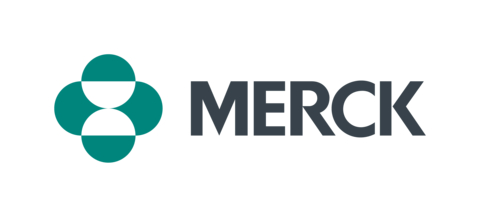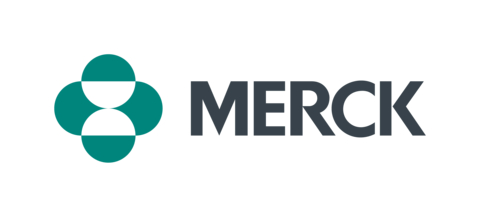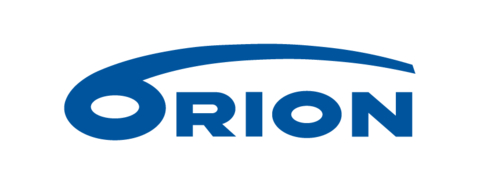RAHWAY, N.J.--(BUSINESS WIRE)--Merck (NYSE: MRK), known as MSD outside of the United States and Canada, and Orion Corporation (“Orion”) today announced that notice has been provided of the mutual exercise of an option to convert the companies’ ongoing co-development and co-commercialization agreement for opevesostat (MK-5684/ODM-208), an investigational CYP11A1 inhibitor, and other candidates targeting CYP11A1 into an exclusive global license for Merck.
“We are pleased with the progress made to date in our collaboration with Orion, including the initiation of two pivotal Phase 3 trials evaluating opevesostat in certain patients with metastatic castration-resistant prostate cancer,” said Dr. Dean Y. Li, president, Merck Research Laboratories. “We will continue to advance the clinical development program for opevesostat with speed and rigor to help address the needs of patients living with prostate cancer.”
“The conversion of this collaboration into a license agreement allows Orion to focus our resources to progress our other promising development candidates while both remaining well positioned to benefit from the development and potential commercialization of opevesostat and meeting our financial objectives,” said Liisa Hurme, president and chief executive officer, Orion Corporation. “We believe Merck provides the best choice to maximize the potential of opevesostat, a compound discovered by Orion’s scientists, for the treatment of patients with certain types of prostate cancer.”
As previously announced under the companies’ original co-development and co-commercialization agreement, each party was granted an option to convert the co-exclusive license into an exclusive global license for Merck. With the exercise of the option, Merck will gain global exclusive rights to develop and commercialize opevesostat and other candidates targeting CYP11A1 covered by the agreement.
Under the terms of the agreement, Orion is now eligible to receive development milestone payments up to $30 million, regulatory milestone payments up to $625 million and sales-based milestone payments up to $975 million as well as annually tiered royalty payments ranging from a low double-digit rate up to a rate in the low twenties on net sales for any commercialized licensed product. The development and regulatory milestones are determined by the scope of a number of treatment indications and multiple geographies. Annual sales exceeding several billion US dollars would be required to reach the total amount of the sales milestones and higher end of the royalty rate. In addition, as a result of the exercise of the option, Merck will now assume full responsibility for all past and future development and commercialization expenses associated with the candidates covered by the agreement. As a result of the option exercise and Merck’s assumption of expenses, Orion announced it will release €60 million that was reserved in July 2022 to cover Orion’s share of development cost to be accrued from the balance sheet to net sales and operating profit in Q3 2024. Orion will retain responsibility for the manufacture of clinical and commercial supply for Merck. No payment is associated with the exercise of this option.
The exclusive global license is subject to approval under the Hart-Scott-Rodino Antitrust Improvements Act and other customary conditions, and is expected to become effective in the third quarter of 2024.
About opevesostat and clinical trial program
Opevesostat is an oral, non-steroidal and selective inhibitor of CYP11A1 discovered and developed by Orion and is being investigated for the treatment of hormone-dependent cancers, such as prostate cancer. By inhibiting CYP11A1 activity, opevesostat is designed to suppress the production of all steroid hormones and their precursors that may activate the androgen receptor signaling pathway.
In 2023, Merck and Orion initiated OMAHA1 (NCT06136624) and OMAHA2a (NCT06136650), two pivotal Phase 3 clinical trials evaluating opevesostat in combination with hormone replacement therapy (HRT), for the treatment of certain patients with metastatic castration-resistant prostate cancer (mCRPC).
OMAHA1 is a randomized, open-label Phase 3 trial evaluating opevesostat in combination with HRT for the treatment of patients with later-line mCRPC who have failed one prior new hormonal agent (NHA) and one or two prior taxanes compared to an alternative NHA (abiraterone or enzalutamide). The trial will enroll an estimated 1,200 patients around the world. The primary endpoints are overall survival (OS) and radiographic progression-free survival (rPFS) by androgen receptor ligand-binding domain (AR LBD) mutation status. Secondary endpoints include time to first subsequent therapy (TFST), objective response rate (ORR) and duration of response (DOR).
OMAHA2a is a randomized, open-label Phase 3 trial evaluating opevesostat in combination with HRT for the treatment of patients with front-line mCRPC who have failed one prior NHA compared to physician’s choice of NHA (abiraterone or enzalutamide). The trial will enroll an estimated 1,500 patients around the world. The primary endpoints are OS and rPFS by AR LBD mutation status. Secondary endpoints include TFST, ORR and DOR.
About metastatic castration-resistant prostate cancer
Prostate cancer is the second most common cancer in male patients globally and is associated with a significant mortality rate. Development of prostate cancer is often driven by male sex hormones called androgens, including testosterone. In patients with metastatic castration-resistant prostate cancer (mCRPC), their prostate cancer grows and spreads to other parts of the body, despite the use of androgen-deprivation therapy to block the action of male sex hormones. Approximately 10-20% of patients with prostate cancer are estimated to develop castration-resistant prostate cancer (CRPC) within five years, with at least 84% of these patients presenting with metastases at the time of CRPC diagnosis. Of patients with no metastases at CRPC diagnosis, 33% are likely to develop metastases within two years.
About Merck
At Merck, known as MSD outside of the United States and Canada, we are unified around our purpose: We use the power of leading-edge science to save and improve lives around the world. For more than 130 years, we have brought hope to humanity through the development of important medicines and vaccines. We aspire to be the premier research-intensive biopharmaceutical company in the world - and today, we are at the forefront of research to deliver innovative health solutions that advance the prevention and treatment of diseases in people and animals. We foster a diverse and inclusive global workforce and operate responsibly every day to enable a safe, sustainable and healthy future for all people and communities. For more information, visit www.merck.com and connect with us on X (formerly Twitter), Facebook, Instagram, YouTube and LinkedIn.
About Orion
Orion is a globally operating Finnish pharmaceutical company – a builder of well-being for over a hundred years. We develop, manufacture and market human and veterinary pharmaceuticals and active pharmaceutical ingredients. Orion has an extensive portfolio of proprietary and generic medicines and consumer health products. The core therapy areas of our pharmaceutical R&D are oncology and pain. Proprietary products developed by Orion are used to treat cancer, neurological diseases and respiratory diseases, among others. Orion's net sales in 2023 amounted to EUR 1,190 million and the company had about 3,600 employees at the end of the year. Orion's A and B shares are listed on Nasdaq Helsinki.
Forward-Looking Statement of Merck & Co., Inc., Rahway, N.J., USA
This news release of Merck & Co., Inc., Rahway, N.J., USA (the “company”) includes “forward-looking statements” within the meaning of the safe harbor provisions of the U.S. Private Securities Litigation Reform Act of 1995. These statements are based upon the current beliefs and expectations of the company’s management and are subject to significant risks and uncertainties. There can be no guarantees with respect to pipeline candidates that the candidates will receive the necessary regulatory approvals or that they will prove to be commercially successful. If underlying assumptions prove inaccurate or risks or uncertainties materialize, actual results may differ materially from those set forth in the forward-looking statements.
Risks and uncertainties include but are not limited to, general industry conditions and competition; general economic factors, including interest rate and currency exchange rate fluctuations; the impact of pharmaceutical industry regulation and health care legislation in the United States and internationally; global trends toward health care cost containment; technological advances, new products and patents attained by competitors; challenges inherent in new product development, including obtaining regulatory approval; the company’s ability to accurately predict future market conditions; manufacturing difficulties or delays; financial instability of international economies and sovereign risk; dependence on the effectiveness of the company’s patents and other protections for innovative products; and the exposure to litigation, including patent litigation, and/or regulatory actions.
The company undertakes no obligation to publicly update any forward-looking statement, whether as a result of new information, future events or otherwise. Additional factors that could cause results to differ materially from those described in the forward-looking statements can be found in the company’s Annual Report on Form 10-K for the year ended December 31, 2023 and the company’s other filings with the Securities and Exchange Commission (SEC) available at the SEC’s Internet site (www.sec.gov).





